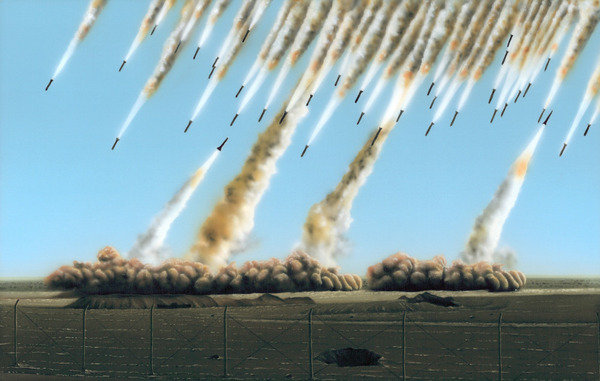Oliver Laric
dal 29/5/2014 al 4/10/2014
Segnalato da
29/5/2014
Oliver Laric
Hirshhorn Museum and Sculpture Garden, Washington
The repeated manipulation of images and ideas by people other than their originators is a staple of online life. His 'Versions' videos (2010 and 2012) address the erosion of notions of authenticity and individual authorship by taking up the methods of remix culture. The voiceover in Laric's videos is provided by an actress instructed to simulate the stilted diction of text-to-speech software.

“Versions” Videos Explore Issues of Originality and Group Creativity
The “Versions” videos of Oliver Laric (Austrian, b. Innsbruck, 1981; lives and works in Berlin) address the erosion of notions of authenticity and individual authorship by taking up the methods of remix culture. Two of these works, “Versions” (2012) and “Versions” (2010), appear in the Black Box space at the Smithsonian’s Hirshhorn Museum and Sculpture Garden May 30 through Oct. 5.
The repeated manipulation of images and ideas by people other than their originators is a staple of online life. After Zinedine Zidane headbutted Marco Materazzi during the final game of the 2006 World Cup, video of the incident was transformed as it proliferated, resulting in animations that recast the confrontation as episodes from video games such as Mortal Kombat and Super Mario Bros. and music videos such as MC Hammer’s “U Can’t Touch This,” as well as scenarios that users devised themselves.
When in 2008 it was revealed that an Iranian publicity photo of a missile launch had been digitally altered prior to its release, users responded by creating their own renderings in which the retouching was comically apparent. In segments of “Versions,” Laric frames both of these events so as to undermine the authority of the “originals” and emphasize the collective presence and influence of their many reimaginings.
The voiceover in Laric’s videos is provided by an actress instructed to simulate the stilted diction of text-to-speech software. In an earlier “Versions” video, she matter-of-factly describes the images onscreen and explains their significance to Laric’s argument. In the versions of “Versions” on view at the Hirshhorn, her narration, while still thematic, is more discursive, consisting largely of repurposed snippets of text from writers as varied as Henry James, Gertrude Stein, Jorge Luis Borges, Bruce Lee and James Brown, by way of Lyn Collins, Rob Base and DJ E-Z Rock.
To accompany a slideshow of different casts of Rodin’s “Burghers of Calais,” she intones, “Multiplication of an icon, far from diluting its cultic power, rather increases its fame, and each image, however imperfect, conventionally partakes of some portion of the properties of the precursor.” A Google search reveals the line to be a slightly altered version of a sentence from Anthony Hughes’s essay “Authority, Authenticity and Aura: Walter Benjamin and the Case of Michelangelo,” from a book titled “Sculpture and Its Reproductions.”
Laric displays similar passages from cartoons by Disney or Warner Bros. side by side, confirming that each studio reused its character animations by slotting them into different settings or altogether different narratives. Laric also pairs manga illustrations of athletes with photographs that could have served as their templates.
The historic lineage of ideas of the original and the replica is traced in the construction of the Ise Shrine in Japan, which has been torn down and rebuilt from scratch every 20 years since the seventh century. Its image is accompanied by narration of the philosophical paradox of the Ship of Theseus, which questions whether “a ship that returns to its port of destination after decades, after having all its parts exchanged throughout continuous repairs” remains the same as the ship that departed. Laric further extends the history of the bootleg, the remix and the hybrid by grouping together examples of classical statuary based on shared iconography and a library of stock poses. The cut-and-paste technology of recent years has foregrounded versioning, but it has perhaps never been a new phenomenon.
This press release contains versions of text from an essay by Chris Wiley.
About Black Box
Since 2005, Black Box has featured work by emerging and established artists and artist collectives, including Francis Alÿs, Ori Gersht, Phoebe Greenberg, Jesper Just, Ali Kazma, Kimsooja, Takeshi Murata, Rivane Neuenschwander, Hans Op de Beeck, Semiconductor, Superflex and Guido van der Werve, among others. The artists represent a broad range of nations and approaches to new media. Black Box is organized by curator Kelly Gordon.
Related Programs
The Hirshhorn offers a range of interactive educational experiences designed to engage people of all interest levels in contemporary art; consult hirshhorn.si.edu for a complete schedule. Also available on the website is the museum’s archive of podcasts, which makes gallery walk-throughs and interviews with artists accessible internationally.
About the Hirshhorn
The Hirshhorn Museum and Sculpture Garden, the Smithsonian’s museum of international modern and contemporary art, has nearly 12,000 paintings, sculptures, photographs, mixed-media installations, works on paper and new media works in its collection. The Hirshhorn presents diverse exhibitions and offers an array of public programs that explore modern and contemporary art. Located at Independence Avenue and Seventh Street S.W., the museum is open daily from 10 a.m. to 5:30 p.m. (closed Dec. 25). Admission to the galleries and special programs is free. For more information about exhibitions and events, visit hirshhorn.si.edu. Follow the Hirshhorn on Facebook at facebook.com/hirshhorn, on Twitter at twitter.com/hirshhorn and on Tumblr at hirshhorn.tumblr.com. Or sign up for the museum’s eBlasts at hirshhorn.si.edu/collection/social-media. To request accessibility services, contact Kristy Maruca at marucak@si.edu or (202) 633-2796, preferably two weeks in advance.
Image: Still from Oliver Laric’s Versions, 2010. Courtesy of the artist and Seventeen, London
CONTACT
Hirshhorn Museum: Glenn Dixon
(202) 633-2807; dixond@si.edu
Hirshhorn Museum
700 Independence Ave SW
HOURS
Museum: 10–5:30
Plaza: 7:30–5:30
Garden: 7:30–DUSK
Open daily, except December 25th.
ADMISSION
Admission is always FREE



